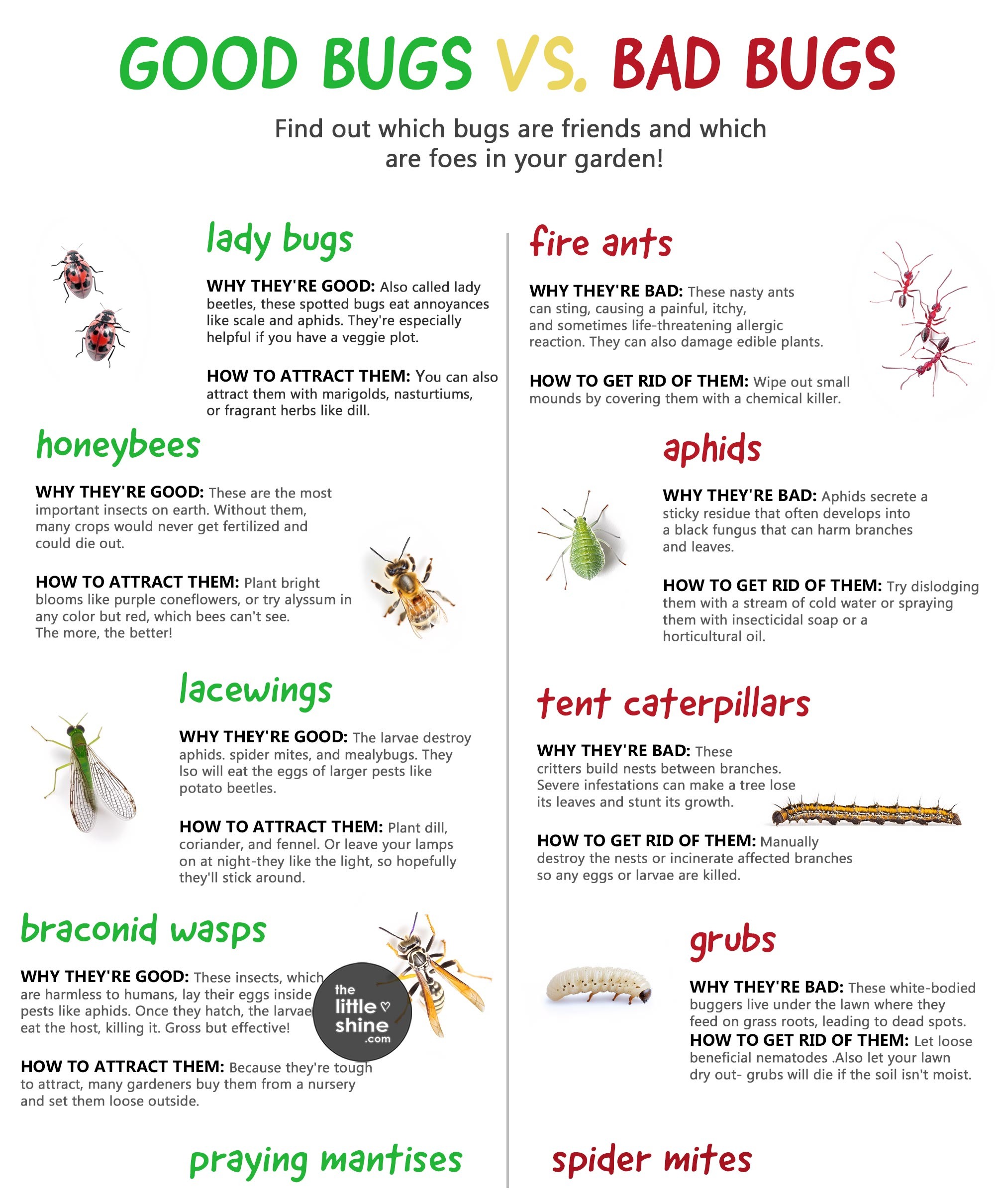Not all bugs are harmful to your garden. Did you know that there are some bugs like ladybugs, honeybees etc., that are actually good for your garden? In this article you can find out which are friendly bugs and which bugs are detrimental to your garden.

Good Bugs in a Garden
1. Honeybees
Why they’re good: These pollinators are the most important insects on earth. Without them, many crops would never get fertilized and could die out after a point.
How to attract them: You can plant bright blooms like purple coneflowers, or try alyssum in any color but red, because bees cannot see the color red.
2. Ladybugs
Why they’re good: Ladybugs are also called lady beetles. They can other bugs like scale and aphids. They’re especially helpful if you have a vegetable garden.
How to attract them: Ladybugs often show up on their own if pests are present. You can also attract them with marigolds, nasturtiums, or fragrant herbs like dill. You could also buy them at a nursery and set them loose outside.
3. Braconid Wasps
Why they’re good: Braconid wasps are harmless to humans. They lay their eggs inside pests like aphids. Once they hatch, the larvae eat the host, killing it.
How to attract them: They are tough to attract. So often, people buy them from a nursery and set them loose outside.
4. Lacewings
Why they’re good: The larvae of lacewings destroy aphids, spider mites, and mealybugs. They also will eat the eggs of larger pests like potato beetles.
How to attract them: You can plant dill, coriander, and fennel. Or leave your lamps on at night-they like the light, so hopefully they’ll stick around.
5. Praying Mantises
Why they’re good: Praying mantises are carnivorous insects and are the best hunters in the garden. In spring, baby mantises gobble up tiny pests.
How to attract them: You can install black lights (which available at hardware stores). Adults may even show up on their own to hunt for insects.
Bad Bugs in a Garden
1. Spider mites
Why they’re bad: Spider mites spin webs that can suck dry your favourite plants. Almost everything with green leaves is at risk.
How to get rid of them: They attack plants that don’t get enough moisture, so regular watering helps. If you see them, hit them with a forceful spray from a hose.
2. Aphids
Why they’re bad: Aphids secrete a sticky residue that often develops into a black fungus that can harm branches and leaves.
How to get rid of them: You can try dislodging them with a stream of cold water or spraying them with insecticidal soap or a horticultural oil. Or plant nasturtiums to attract predators like ladybugs.
3. Tent Caterpillars
Why they’re bad: Tent caterpillars are most often found on crab apple and cherry trees, these critters build nests between branches. Severe infestations can make a tree lose its leaves and stunt its growth.
How to get rid of them: The most effective way to control them is by manually destroying the nests or bringing the affected branches to a garbage incinerator so any eggs or larvae are killed.
4. Fire Ants
Why they’re bad: Fire ants can sting, causing a painful, itchy, and sometimes life-threatening allergic reaction. They can also damage edible plants.
How to get rid of them: You can wipe out small mounds by covering them with a chemical killer.
5. Grubs
Why they’re bad: Grubs are white-bodied bugs that live under the lawn where they feed on grass roots, leading to dead spots.
How to get rid of them: You can let loose beneficial nematodes (tiny predatory worms, available at nurseries). Also let your lawn dry out- grubs will die if the soil isn’t moist. Grass will rebound with watering.
